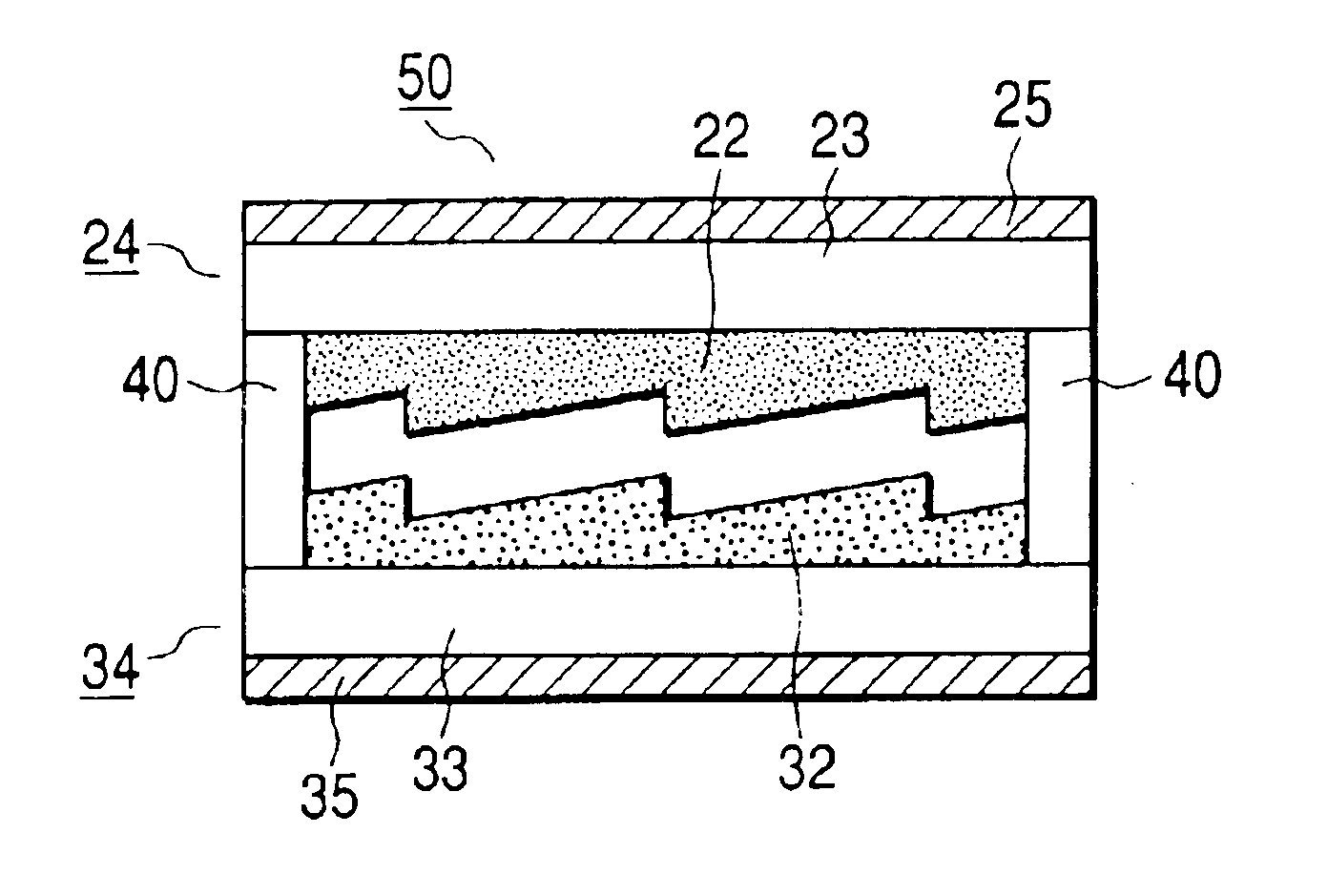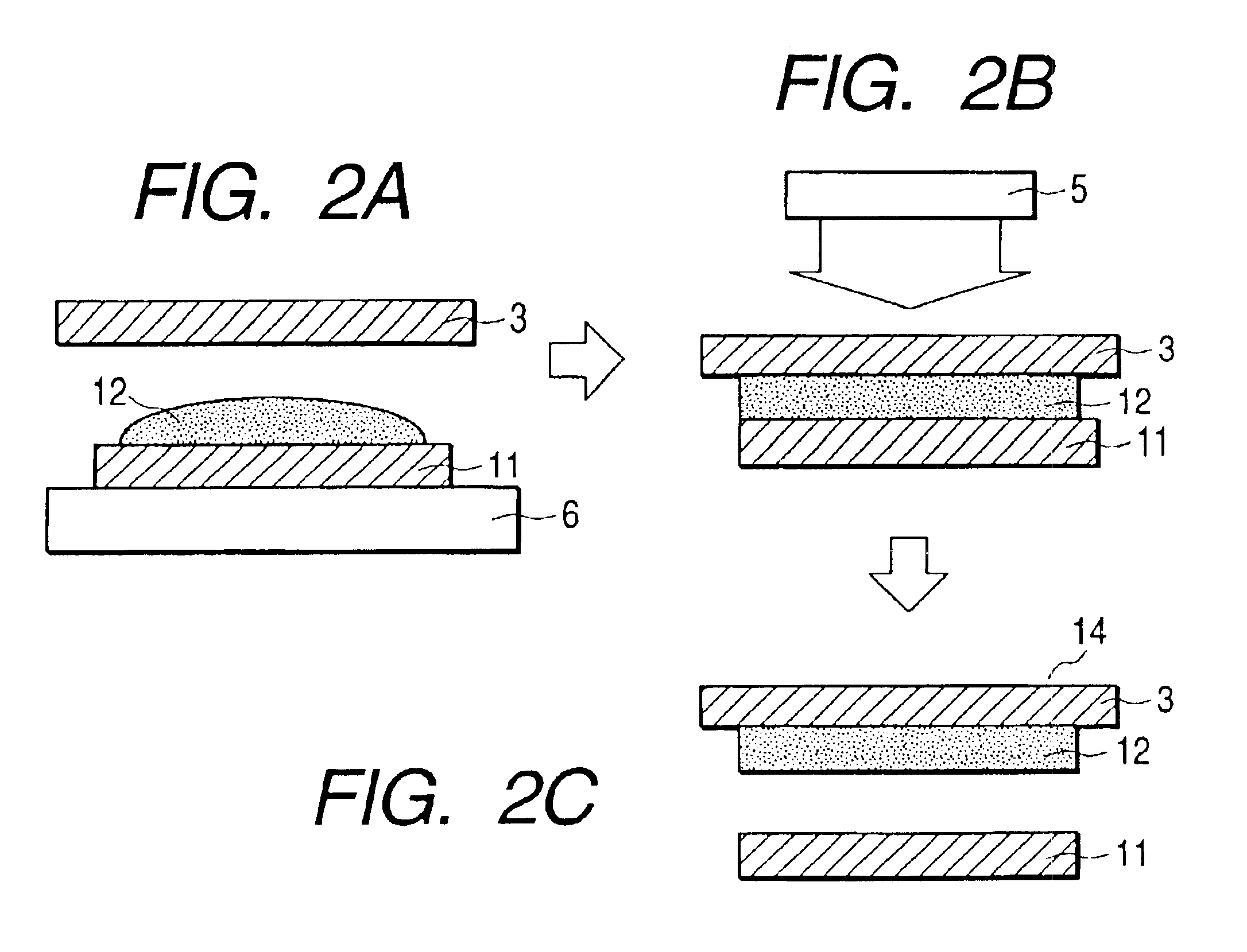Optical material, optical element, multilayer diffraction optical element, optical system, and method of molding optical element
a technology of optical elements and optical elements, applied in the field of optical elements, optical elements, multilayer diffraction optical elements, optical systems, etc., can solve the problems of small load, industrially difficult, and inability to fully correct chromatic aberration, etc., and achieve the effect of greater refractive index dispersion
- Summary
- Abstract
- Description
- Claims
- Application Information
AI Technical Summary
Benefits of technology
Problems solved by technology
Method used
Image
Examples
example 1
[0050]In example 1, were blended 7.9 g of N-vinylcarbazole (manufactured by TOKYO KASEI KOGYO), 1.0 g of polyvinylcarbazole (manufactured by Acros), and 0.1 g of Irgacure 184 (manufactured by Ciba Specialty Chemicals) as a light polymerization initiator. The blend was heated and melted at 80° C. for two hours, and then fully stirred to obtain a photo-curing resin 12. FIGS. 2A to 2C show a method of molding an optical element in example 1. The mutually corresponding parts in FIGS. 2A to 2C and FIGS. 1A to 1C are designated by the same reference numerals. FIGS. 2A to 2C differ from FIGS. 1A to 1C in that a flat mold 11 is used to facilitate the experiment instead of the mold 1 processed into a diffraction grating shape. Consequently, no grating is formed on the molded photo-curing resin. At this time, the viscosity of the photo-curing resin 12 was 71.8 mPa·s (80° C.).
[0051]Then, a dispenser was used to discharge approximately 0.04 g of the photo-curing resin 12 kept at 80° C. onto the...
example 2
[0060]In example 2, experiments (experiment examples 5 to 9) were conducted by blending N-vinylcarbazole (manufactured by TOKYO KASEI KOGYO), polyvinylcarbazole (manufactured by Acros), and Irgacure 184 (manufactured by Ciba Specialty Chemicals) as a light polymerization initiator at ratios as shown in Table 2. The experiment method is completely the same as for example 1. The mixture was heated and melted at 80° C. for two hours, and then fully stirred to prepare each optical material for this example. For a comparison purpose, we also conducted comparison experiment example 5 based on a blend ratio as shown in Table 2. Table 3 lists viscosities of the optical materials for examples 5 through 9 and the comparison experiment example.
TABLE 2Weight (g) of N-Weight (g) ofWeight (g) ofvinylcarbazolepolyvinylcarbazoleIrgacure 184Comparison9.90.00.1experimentexample 5Experiment8.91.00.1example 5Experiment7.92.00.1example 6Experiment6.93.00.1example 7Experiment5.94.00.1example 8Experiment4...
example 3
[0070]In example 3, 7.9 g of N-vinylcarbazole (manufactured by TOKYO KASEI KOGYO), 1.0 g of polyvinylcarbazole (manufactured by Acros), and 0.1 g of Irgacure 184 (manufactured by Ciba Specialty Chemicals) as a light polymerization initiator ware blended. The blend was heated and melted at 80° C. for two hours, and then fully stirred to obtain an optical material 22. Then, a dispenser was used to discharge approximately 0.04 g of the optical material 22 kept at 80° C. onto the mold kept at room temperature. The mold temperature is controlled so as to be within ±1.0° C. Since no crystallization occurred, the lens blank 23 kept at room temperature was gently placed on the optical material. Then, the lens blank 23 was gently pressed to spread the optical material 22 to fill it between the lens blank 23 and the mold. Further, ultraviolet light with the center wavelength 365 nm was applied for 300 seconds at 40 mW from the direction of the glass plate to cure the optical material 22. Fina...
PUM
| Property | Measurement | Unit |
|---|---|---|
| Ratio | aaaaa | aaaaa |
| Shape | aaaaa | aaaaa |
Abstract
Description
Claims
Application Information
 Login to View More
Login to View More - R&D
- Intellectual Property
- Life Sciences
- Materials
- Tech Scout
- Unparalleled Data Quality
- Higher Quality Content
- 60% Fewer Hallucinations
Browse by: Latest US Patents, China's latest patents, Technical Efficacy Thesaurus, Application Domain, Technology Topic, Popular Technical Reports.
© 2025 PatSnap. All rights reserved.Legal|Privacy policy|Modern Slavery Act Transparency Statement|Sitemap|About US| Contact US: help@patsnap.com



